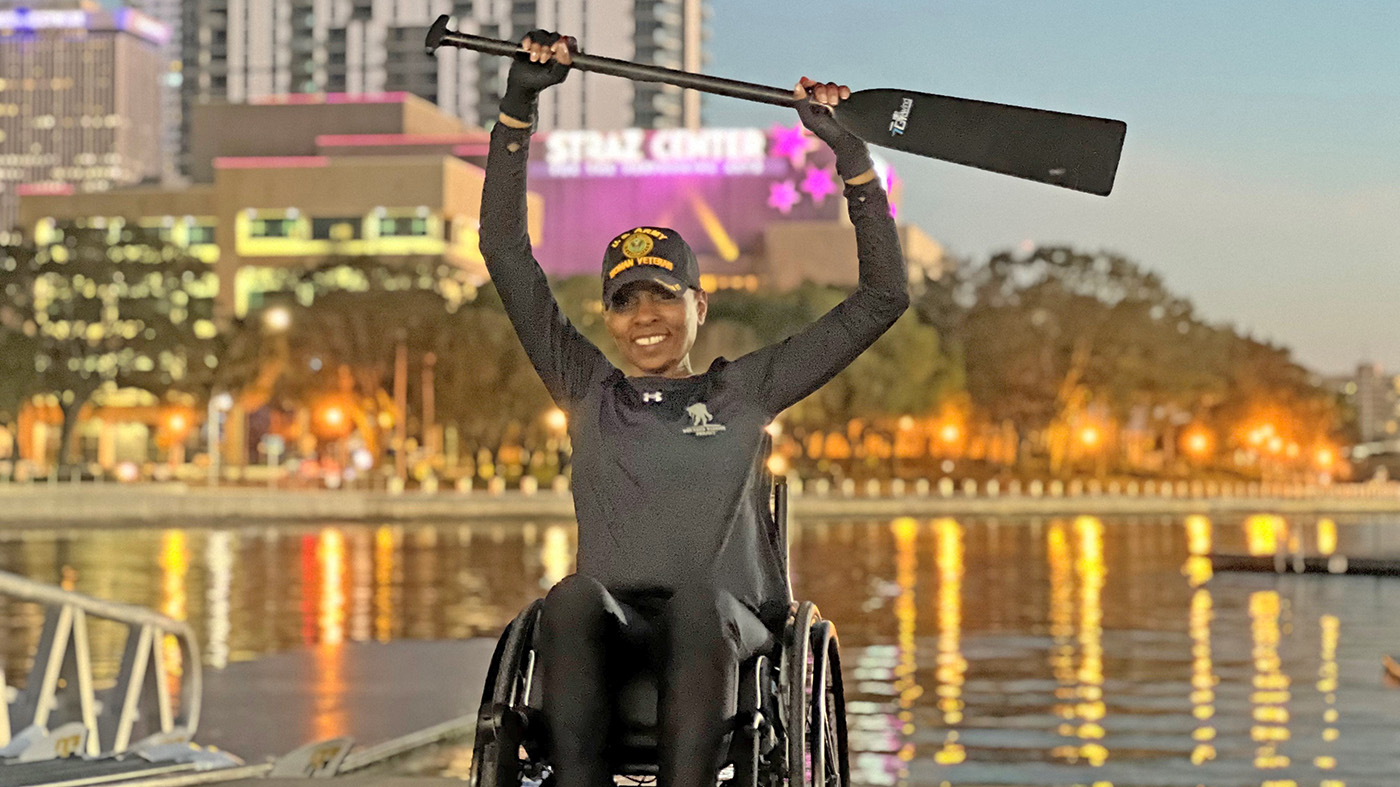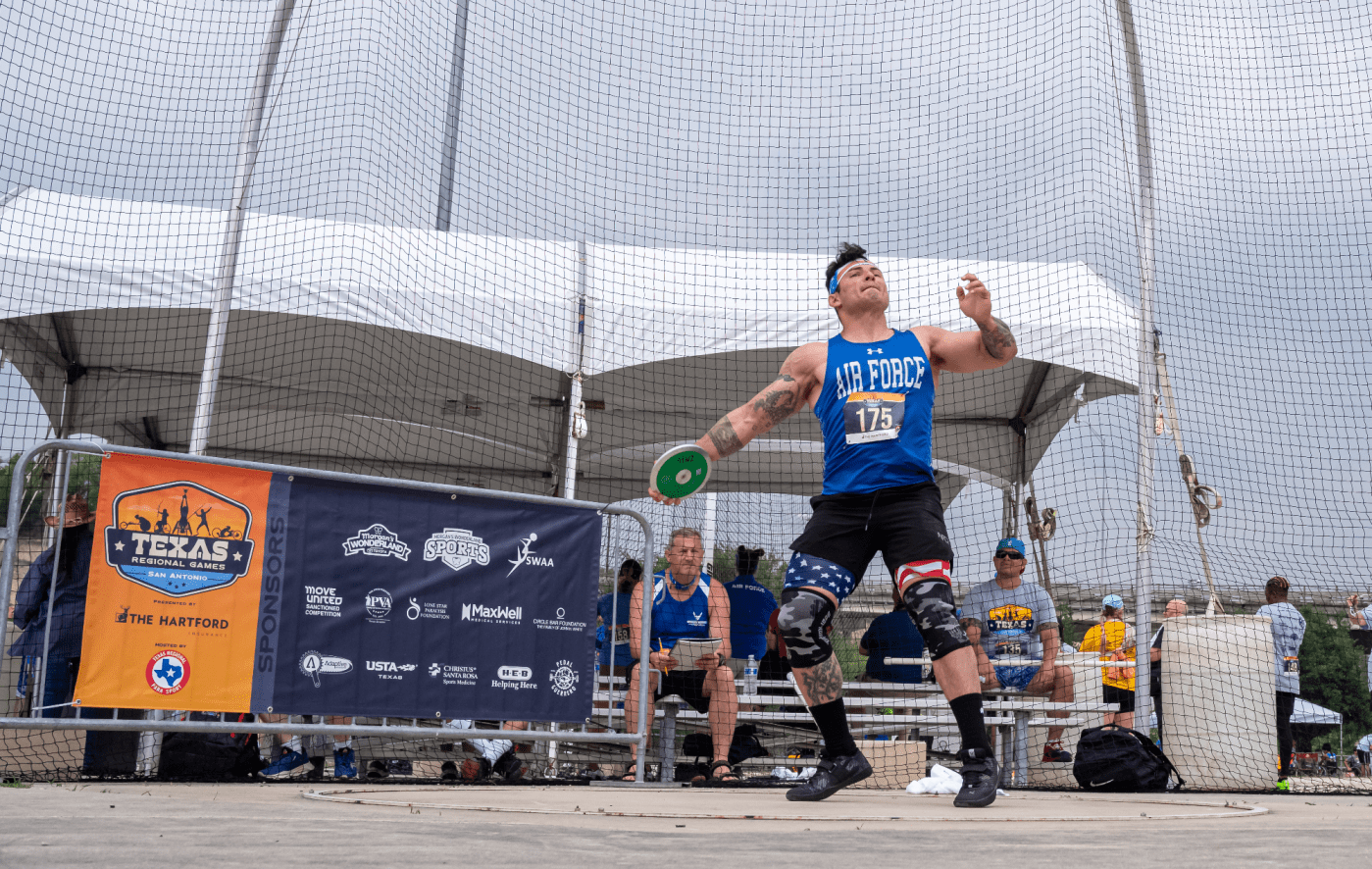A new report this month from the Center for a New American Security sounds a clarion call for more private-sector involvement in the long-term care of the burgeoning population of Veterans from the current conflicts. Author Nancy Berglass writes, “DoD and VA, of course, bear the primary responsibility for the care of those who have borne the battle, but warriors come home to communities, not to federal agencies, and so it is at this crossroads of national obligation and social welfare that a new understanding of military wellness must take root.”
The report makes three key recommendations to address identified shortfalls. The first is developing and implementing a “national homecoming plan.” Berglass asserts that the military does a decent job of preparing recruits for combat, but that the institution does not adequately “de-boot,” or provide that long-term support that, especially, the wounded servicemen and women will need. The second recommendation is the establishment of a continuum-of-care model that enforces improved interoperability between the VA and DoD. And the third is an increase in public-private partnerships–with a vetting process that does not discriminate against smaller, non-military service organizations.
Berglass makes a convincing argument that has been echoed by many state agencies and non-governmental organizations for years. Their mantra “We take care of our own” may not be in the best interests of VA’s constituents, as it is ill-equipped to respond to the wide variety of Veterans in this younger, combat-tested population of returning service members and their families. “By their very nature, federal one-size-fits-all programs simply cannot apply equally to the unique circumstances facing, for example, an unmarried wounded Army Reservist from rural Iowa, as compared to a career Marine from San Diego who is returning home to three children.”
Chairman of the Joint Chiefs of Staff Adm. Mike Mullen recognized this quandary at the 2009 Defense Forum (sponsored by the U.S. Naval Institute and the Military Officers Association of America) when he asked the audience somewhat rhetorically, “How do we create a system across America that sustains [Veterans’] needs throughout their lives?” It is clear that VA cannot do it alone. Local organizations—more nimble, better attuned to their populace’s demographics and in close proximity to them—are ideally suited to serve the needs of this generation of veterans that will require decades of support.
There are shining examples of non-profits outside the Veterans service sector doing enviable work. During this same speech, Admiral Mullen recognized the efforts of USA Together, a non-profit that matches service members with vetted organizations that can provide services—financial or in-kind. This clearinghouse quickly and simply connects military people who have an identified need with individuals or organizations that have services or goods to donate. It puts the needy and the service provider together with no third-party intervention or referrals.
Give An Hour is a nationwide, non-profit organization founded in 2005 with a network of mental health professionals that is providing free services to U.S. troops, veterans and their families—in the communities in which they live and work.
The state of Virginia is putting together a structure that includes a community service board with representation from all civilian organizations that can augment VA. This is being initially funded with $1.7 million out of the state budget.
Then-Director of Veterans Affairs for the state of Illinois, Tammy Duckworth, fostered the establishment of 768 community-based outpatient clinics to allow access to care in remote areas of the state. She also awarded non-profits that were working directly with Illinois veterans with state grants of up to $100,000.
Michael Dabbs, president of the non-profit Brain Injury Association of Michigan, said at the 2010 Defense Forum that his organization employs 10,000 workers in the brain injury field and says there are far more brain injury assets outside VA than inside the system.
Is VA taking advantage of all these outside resources available? Can they disavow themselves of the arms-length treatment that federal agencies and their lawyers give to all “non-federal entities” and embrace these non-federal initiatives and their innovative solutions? Do they have a process in place to quickly and efficiently augment their infrastructure with outsourced, vetted and complementary services from the states and non-profits?
Taylor Baldwin Kiland is the vice president of Marketing & Communications at the United States Navy Memorial in Washington, D.C. A former naval officer, Taylor is also a regular contributor to Examiner.com and the Naval Institute Blog, writing about veterans’ issues.
Topics in this story
More Stories
Army Veteran Malika Montgomery says one of the things that helped her live her best life with multiple sclerosis was surrounding herself with positive people.
Acknowledging the issues that Veterans face and working toward solutions is crucial for ensuring they have the support they need to thrive in civilian life.
Last year, Move United hosted 26 adaptive sports competitions in 22 states for 1,537 individual athletes. This year, that number is increasing to 35 events in 24 states for even more Veteran athletes.






Some very specialized services, especially for wounded vets, are here in every state offering to help. As you say, there are many non-profits out there with years of experience helping people with brain injuries, or other disabling conditions, put their lives back together and remain independent.
There is a silent epidemic brewing at the local level in many families and communities to which veterans are returning, in some respects reflective of what we know about the fate of veterans returning from Vietnam and other US conflicts, though with some significant twists.
Battlefield triage has so evolved that our Veterans are surviving injuries that were historically fatal to those who served in Vietnam. Today’s veterans serve longer in the theater of war and they survive in larger numbers, as we know, though with higher rates of compound catastrophic physical and mental health disorders (brain injury, limb loss, severe physical health disorders, accompanied by high rates of PTSD and depression).
As a relatively older military force, they are returning to communities in which local healthcare and nonprofit service providers are dramatically unprepared to respond meaningfully, coherently to their needs. Communities and their health and human service providers lack basic knowledge and thoughtfully integrated service strategies that transcend institutional boundaries. We’re simply unprepared — in the VA, within the VA service infrastructure, in our communities — for the unprecedented and complex mix of disorders confronting today’s Veterans. This is all, probably, to state the obvious.
In this context, there is an innocent canary in the mine shaft. With many veterans resisting or simply not readily able to obtain the behavioral health services they require, communities may need to look to the children of veterans for the 1st externally visible efffects of PTSD and depression. Observing the impact on children of changing conditions in the home can help us mount the early interventions needed to head-off or mitigate the substance use, violence, joblessness, homelessness, and suicide that was the fate of many within that smaller percentage of survivors of multiple-catastrophic injuries of previous wars but which is epidemic now.
To again state the obvious, Veterans and their children and families deserve coherent community support, and the VA and other federal agencies responsible for their post-service care can afford to think through what it will take to bring communities and local health and human service providers into a VA supported “Safety Net for Vets.”
As one of the 1st external effects of behavioral problems in the home is observable change in the behavior of children, we can afford to look to children to help us arrive at earlier interventions on these always distressing, soometimes deadly downstream effects of military service.
Some very specialized services, especially for wounded vets, are here in every state offering to help. As you say, there are many non-profits out there with years of experience helping people with brain injuries, or other disabling conditions, put their lives back together and remain independent.
The Assistive Technology support provided through the CAP program (DoD’s Computer/Electronic Accommodations Program) has moved assistive technology into the spotlight for wounded vets. Are federal agencies looking for local partners? If so, we would like to extend the same kind of assistance to those leaving active duty. “Boots on the ground” assistive technology professionals can come to their home to help them problem solve and make a solution work in their everyday lives. Sometimes needs are not identified until that service member enters the VA system, and, for instance, starts college. We can coordinate with the federal agencies and the VA to get this done, but we need partners within the VA. Could CAP help to network those state-level supports, and facilitate relationships with the local VA?
Fred Tchang, ATP
Director, Assistive Technology Services
Advancing Opportunities